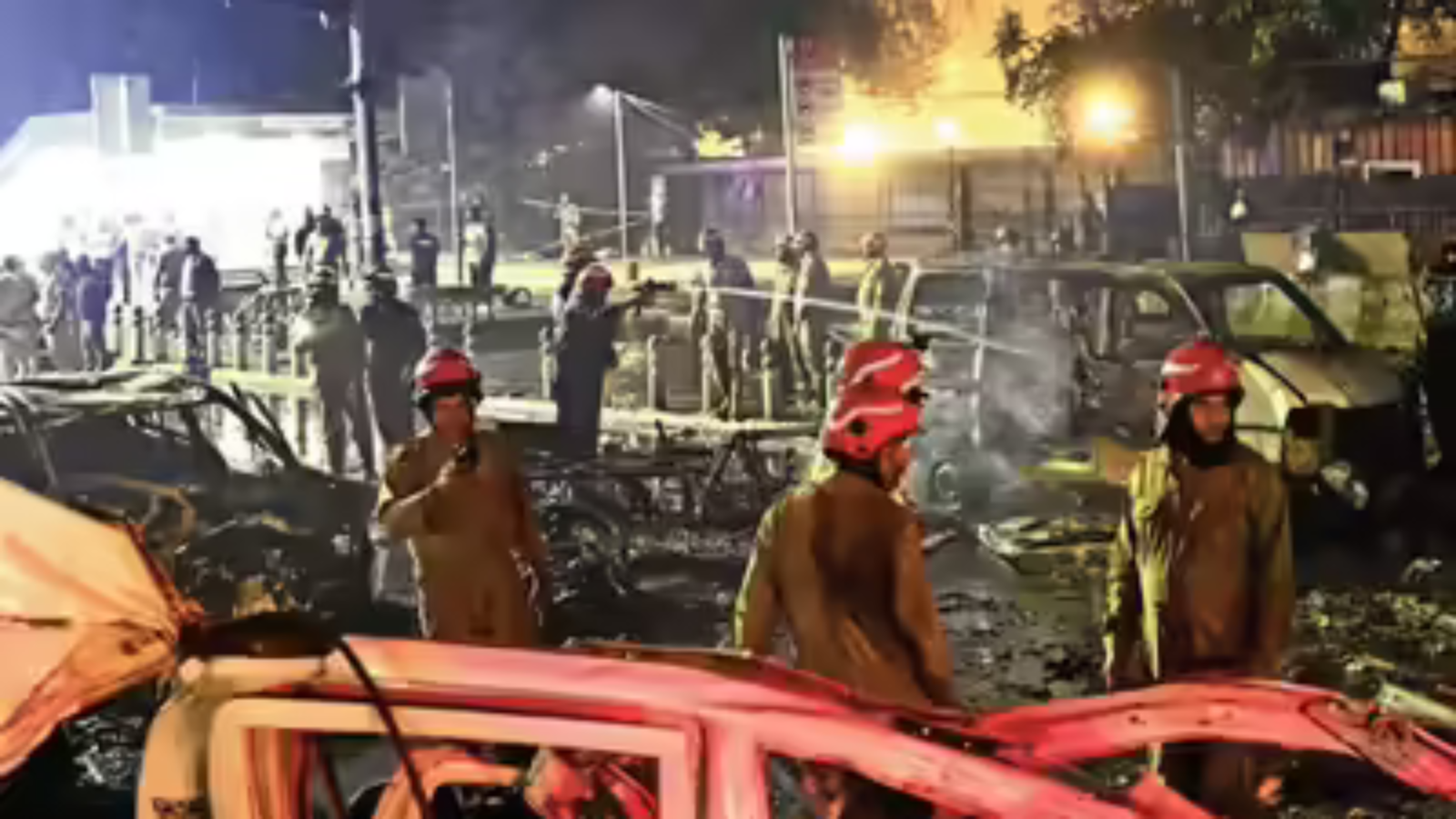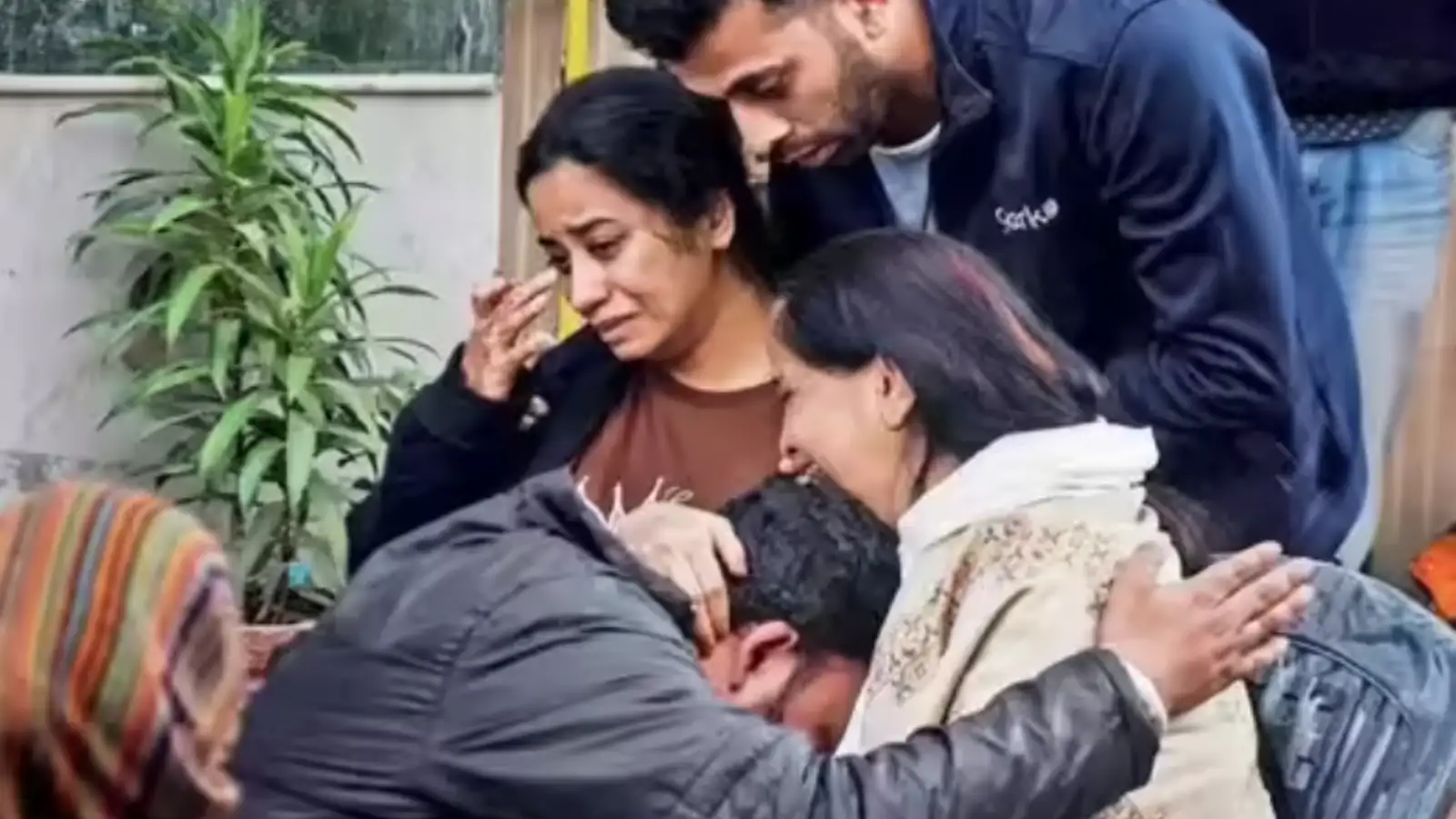Who Are the Six Doctors Behind the Delhi Red Fort Blast? From Umar to Muzammil, Here’s What We Know
The shocking explosion near Delhi’s Red Fort, which claimed at least 12 lives and left several others injured, has unveiled a chilling truth - a “white-collar terror module” operating under the garb of respectability. Comprising doctors, clerics, and educated professionals, this network is believed to have links with banned outfits Jaish-e-Mohammed (JeM) and Ansar Ghazwat-ul-Hind (AGuH).
A coordinated operation involving multiple state police forces and central agencies has led to the arrest of at least seven suspects, with over 2,900 kilograms of explosives and a cache of firearms recovered from several states. The National Investigation Agency (NIA) has now taken over the probe to untangle the full extent of the conspiracy.
Dr Muzammil Ganaie : The Alleged Mastermind
A 35-year-old doctor from Koil in Pulwama, Jammu and Kashmir, Dr Muzammil Ganaie was teaching MBBS students at Al-Falah University in Faridabad. Investigators believe he was one of the chief architects of the terror plan. From his Faridabad residence, police recovered a significant quantity of ammonium nitrate, firearms, and bomb-making materials. Officials confirmed that he carried out multiple reconnaissance visits near the Red Fort ahead of the Republic Day celebrations, indicating meticulous planning.
Who is Dr Adeel Ahmad Rather: The Trusted Collaborator
From Kulgam, Kashmir, Dr Adeel Ahmad Rather worked closely with Muzammil and was also associated with Al-Falah University. His arrest in Saharanpur, Uttar Pradesh, came after Muzammil’s interrogation revealed his role in storing and transporting explosives. Weapons, including an AK-47 rifle, were found in his possession, further cementing his involvement in the module’s operations.
Dr Umar Un Nabi: The Alleged Executioner
Another doctor from Pulwama, Dr Umar Un Nabi, is believed to have driven the i20 car that detonated near the Red Fort. Despite being under surveillance, he reportedly evaded authorities by frequently changing locations. “He maintained close ties with Dr Muzammil and Dr Adeel, coordinating logistics and storage of explosives,” an official said. His presence in the vehicle during the explosion made him one of the central figures in the case.
Dr Shaheen Sayeed: The Link Between Cells
Dr Shaheen Sayeed, a doctor from Lucknow, allegedly served as a crucial link between the Faridabad module and handlers in Kashmir. After Muzammil’s arrest, she reportedly panicked and attempted to dispose of a rifle recovered from her car. Investigators believe she played a pivotal role in facilitating communication and arranging chemical materials essential for the module’s activities.
Dr Ahmed Mohiyuddin Saiyed: The Radical Recruit
A Hyderabad-based doctor with an MBBS degree from China, Dr Ahmed Mohiyuddin Saiyed was arrested by the Gujarat ATS on November 8. Once running a small shawarma business in Rajendranagar, he is believed to have been radicalised through online channels, particularly Telegram. His alleged handler, Abu Khadija, is linked to the Islamic State-Khorasan Province (ISKP). Police recovered multiple firearms and materials used to create deadly toxins, suggesting advanced preparation for attacks.

Irfan Ahmad and Maulvi Hafeez Mohammad Ishtiaq: The Ideological Anchors
Irfan Ahmad, a cleric from Shopian, is accused of instigating and recruiting several members of the terror cell. He allegedly acted as a motivator, connecting radicalised professionals to militant groups operating in Kashmir.
Meanwhile, Maulvi Hafeez Mohammad Ishtiaq, the Imam of Al-Falah Mosque in Faridabad, was arrested after 2,500 kilograms of explosives were discovered inside his university quarters. Police suspect that he provided safe houses, religious cover, and helped channel funds for the group’s operations.
Dr Sajad Malik: The Newest Name Under Scrutiny
The arrest of another Pulwama-based doctor, Sajad Malik, has added a new layer to the investigation. Authorities are yet to confirm if Malik is a suspect or a person of interest linked to Dr Umar Un Nabi. However, his detention highlights the widening web of professional radicals connected to the Delhi blast case.
The Network’s Reach and Recovery
The module used encrypted communication channels to coordinate across states. Intensive questioning of Al-Falah University staff and students led to the discovery of explosives, firearms, and digital evidence linking them to militant outfits. Further raids across Jammu and Kashmir uncovered more weapons, including AK-series rifles, pistols, and IED components.
Security Tightened Across the Capital
Following the explosion, Delhi witnessed unprecedented security measures. Police sealed border points, inspected every vehicle, and deployed bomb squads, sniffer dogs, and anti-sabotage teams across the city. A senior officer stated, “We are taking no chances. The focus is on maintaining public confidence and ensuring that the city remains secure.”
Unmasking the ‘White-Collar’ Terror Web
This case stands out for the profile of those involved - educated professionals who allegedly exploited their academic positions to build a covert terror infrastructure. “The arrests have prevented a major conspiracy aimed at causing large-scale damage in the country,” an intelligence official confirmed. Authorities also found several Pakistani numbers in the seized phones, suggesting cross-border coordination.
What Lies Ahead
As the NIA digs deeper into the case, investigators believe more arrests could follow. The Red Fort blast has exposed a disturbing new front in India’s battle against terrorism - one that hides behind degrees, white coats, and professional respectability. The case serves as a stark reminder that radicalisation can infiltrate even the most unexpected corners of society, demanding vigilance at every level.

A coordinated operation involving multiple state police forces and central agencies has led to the arrest of at least seven suspects, with over 2,900 kilograms of explosives and a cache of firearms recovered from several states. The National Investigation Agency (NIA) has now taken over the probe to untangle the full extent of the conspiracy.
Dr Muzammil Ganaie : The Alleged Mastermind
A 35-year-old doctor from Koil in Pulwama, Jammu and Kashmir, Dr Muzammil Ganaie was teaching MBBS students at Al-Falah University in Faridabad. Investigators believe he was one of the chief architects of the terror plan. From his Faridabad residence, police recovered a significant quantity of ammonium nitrate, firearms, and bomb-making materials. Officials confirmed that he carried out multiple reconnaissance visits near the Red Fort ahead of the Republic Day celebrations, indicating meticulous planning.
Who is Dr Adeel Ahmad Rather: The Trusted Collaborator
From Kulgam, Kashmir, Dr Adeel Ahmad Rather worked closely with Muzammil and was also associated with Al-Falah University. His arrest in Saharanpur, Uttar Pradesh, came after Muzammil’s interrogation revealed his role in storing and transporting explosives. Weapons, including an AK-47 rifle, were found in his possession, further cementing his involvement in the module’s operations.
Dr Umar Un Nabi: The Alleged Executioner
Another doctor from Pulwama, Dr Umar Un Nabi, is believed to have driven the i20 car that detonated near the Red Fort. Despite being under surveillance, he reportedly evaded authorities by frequently changing locations. “He maintained close ties with Dr Muzammil and Dr Adeel, coordinating logistics and storage of explosives,” an official said. His presence in the vehicle during the explosion made him one of the central figures in the case.
Dr Shaheen Sayeed: The Link Between Cells
Dr Shaheen Sayeed, a doctor from Lucknow, allegedly served as a crucial link between the Faridabad module and handlers in Kashmir. After Muzammil’s arrest, she reportedly panicked and attempted to dispose of a rifle recovered from her car. Investigators believe she played a pivotal role in facilitating communication and arranging chemical materials essential for the module’s activities.
Dr Ahmed Mohiyuddin Saiyed: The Radical Recruit
A Hyderabad-based doctor with an MBBS degree from China, Dr Ahmed Mohiyuddin Saiyed was arrested by the Gujarat ATS on November 8. Once running a small shawarma business in Rajendranagar, he is believed to have been radicalised through online channels, particularly Telegram. His alleged handler, Abu Khadija, is linked to the Islamic State-Khorasan Province (ISKP). Police recovered multiple firearms and materials used to create deadly toxins, suggesting advanced preparation for attacks.
You may also like
- Andhra Pradesh sets goal of attracting trillion-dollar investment
- Axis My India exit poll also predicts NDA victory in Bihar, gives 98 to 118 to Mahagathbandhan
- Centre launches portal for startups to access credit across all public sector banks
- Brown Bread vs. White Bread: Comparing fibre, blood sugar control, satiety, and heart health benefits
- Tripura CM Manik Saha to visit Dhalai tomorrow to inaugurate multiple development projects

Irfan Ahmad and Maulvi Hafeez Mohammad Ishtiaq: The Ideological Anchors
Irfan Ahmad, a cleric from Shopian, is accused of instigating and recruiting several members of the terror cell. He allegedly acted as a motivator, connecting radicalised professionals to militant groups operating in Kashmir.
Meanwhile, Maulvi Hafeez Mohammad Ishtiaq, the Imam of Al-Falah Mosque in Faridabad, was arrested after 2,500 kilograms of explosives were discovered inside his university quarters. Police suspect that he provided safe houses, religious cover, and helped channel funds for the group’s operations.
Dr Sajad Malik: The Newest Name Under Scrutiny
The arrest of another Pulwama-based doctor, Sajad Malik, has added a new layer to the investigation. Authorities are yet to confirm if Malik is a suspect or a person of interest linked to Dr Umar Un Nabi. However, his detention highlights the widening web of professional radicals connected to the Delhi blast case.
The Network’s Reach and Recovery
The module used encrypted communication channels to coordinate across states. Intensive questioning of Al-Falah University staff and students led to the discovery of explosives, firearms, and digital evidence linking them to militant outfits. Further raids across Jammu and Kashmir uncovered more weapons, including AK-series rifles, pistols, and IED components.
Security Tightened Across the Capital
Following the explosion, Delhi witnessed unprecedented security measures. Police sealed border points, inspected every vehicle, and deployed bomb squads, sniffer dogs, and anti-sabotage teams across the city. A senior officer stated, “We are taking no chances. The focus is on maintaining public confidence and ensuring that the city remains secure.”
Unmasking the ‘White-Collar’ Terror Web
This case stands out for the profile of those involved - educated professionals who allegedly exploited their academic positions to build a covert terror infrastructure. “The arrests have prevented a major conspiracy aimed at causing large-scale damage in the country,” an intelligence official confirmed. Authorities also found several Pakistani numbers in the seized phones, suggesting cross-border coordination.
What Lies Ahead
As the NIA digs deeper into the case, investigators believe more arrests could follow. The Red Fort blast has exposed a disturbing new front in India’s battle against terrorism - one that hides behind degrees, white coats, and professional respectability. The case serves as a stark reminder that radicalisation can infiltrate even the most unexpected corners of society, demanding vigilance at every level.









